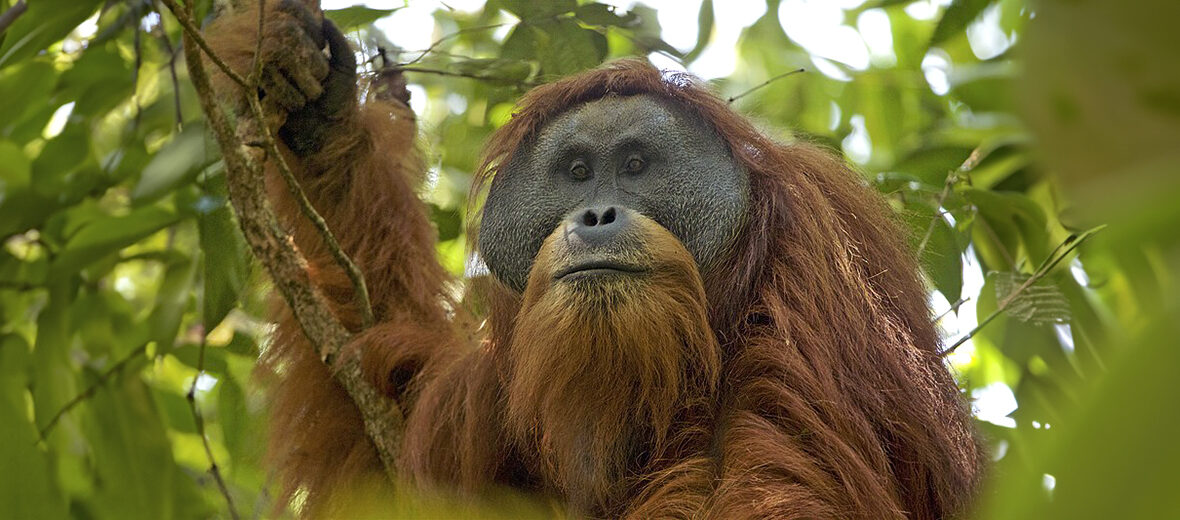
The Tapanuli orangutan can only be found in South Tapanuli in the island of Sumatra in Indonesia. They are 1 of 3 orangutan species. As of 2018, there were only an estimated 800 individuals remaining in the wild. This makes them the most endangered of all the world’s great apes. They face the threats of habitat loss and destruction at the hands of residential and commercial developments, farming, ranching, mining, quarrying, fires, fire suppression, and the timber industry; roads and railroads, which divide their territory and can result in vehicle strike (being hit by vehicles); hunting; trapping; tourism, which interferes with their daily routines; and climate change, that can cause droughts and flooding. The IUCN lists these beautiful beings as Critically Endangered. Their population is also decreasing.
First the Stats…
Scientific name: Pongo tapanuliensis
Weight: Up to 200 lbs.
Length: Up to 54 inches
Lifespan: Up to 45 years
Now on to the Facts!
1.) In 2017, these orangutans were identified as a distinct species, following a detailed phylogenetic study.
2.) The specific name of tapanuliensis, as well as the common name Tapanuli orangutan, both are in reference to Tapanuli, the hilly region in North Sumatra where these primates live.
3.) Genetic comparisons have shown that Tapanuli orangutans diverged from Sumatran orangutans approximately 3.4 million years ago, and then became isolated after the Lake Toba eruption that occurred about 75,000 years ago.
4.) After the eruption, they had continued, albeit sporadic, contact which stopped between 10,000 – 20,000 years ago in what is known as the Late Upper Paleolithic era.
5.) Orangutans were capable of travelling from Sumatra to Borneo because the islands were then connected by land bridges as parts of Sundaland during recent glacial periods, when sea levels were far lower.
But wait, there’s more on the Tapanuli orangutan!
6.) As is the case with all orangutan species, they are sexually dimorphic in that males are larger than females and possess a sizable flanges (cheek pouches).
7.) Their loud, long-distance call, aka ‘long call’, of the male Tapanuli orangutans typically has a higher maximum frequency than that of Sumatran orangutans, and lasts far longer. It also has more pulses than that of Bornean orangutans.
Did you know…?
These orangutans are exclusively arboreal, as after a 3,000 hour long observation none of the observed individuals ever descended to the ground.
8.) Their primary predators are clouded leopards, dholes, tigers, and of course humans.
9.) Tapanuli orangutan’s slow reproductive rates cause problems in increasing their population.
10.) Their preferred habitats are tropical and subtropical moist broadleaf forests.
But wait, there’s still more on the Tapanuli orangutan!
11.) Their entire species can be found within a 390 square mile radius, at elevations of up to 4,300 feet.
12.) Females undergo up to a 9 month gestation (pregnancy) that yields a single infant.
13.) Infants stay by their mother’s side for up to 2 – 3 years before becoming independent.
Now a Short Tapanuli Orangutan Video!
Be sure to share & comment below! Also, check out the Critter Science YouTube channel. Videos added regularly!
Want to suggest a critter for me to write about? Let me know here.
Some source material acquired from: Wikipedia & IUCN
Photo credit: Tim Laman




